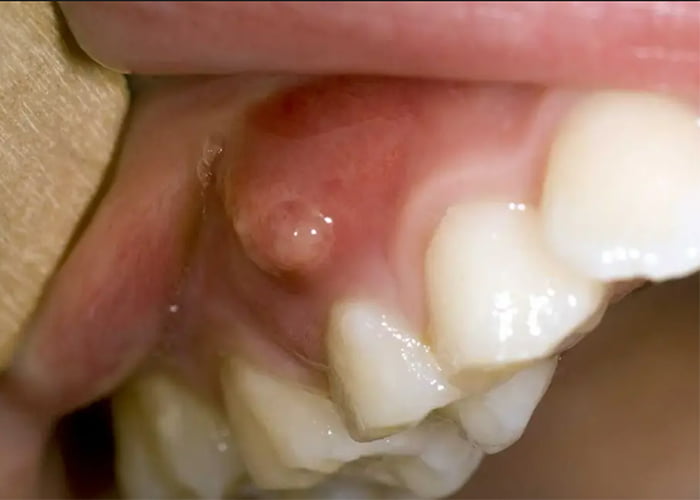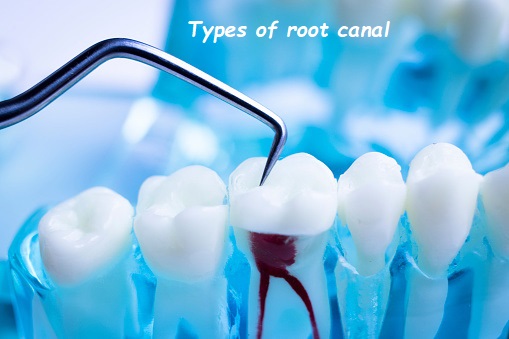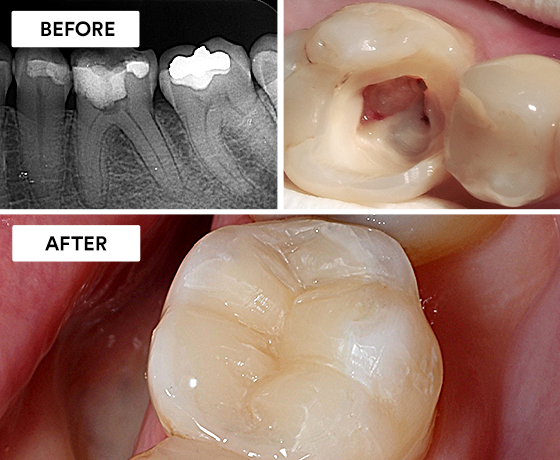Root canal without anesthesia

Have you ever heard the phrase “as painful as a root canal”? It’s often used to describe a particularly unpleasant experience. Root canals have a reputation for being incredibly painful, but modern dental practices, particularly the use of anesthesia, have made this procedure much more bearable. However, there are cases where a root canal might be performed without anesthesia, either due to medical reasons, personal choice, or specific circumstances. This comprehensive guide will explore everything you need to know about undergoing a root canal without anesthesia.
What is a Root Canal?
A root canal is a dental procedure used to treat infection at the center of a tooth (the pulp) and save a tooth that is badly decayed or infected. This procedure involves removing the infected or damaged pulp, cleaning and disinfecting the inside of the tooth, and then filling and sealing it.
Why Might Someone Need a Root Canal?
Several issues can necessitate a root canal:
- Deep cavities: When decay reaches the pulp.
- Cracked or chipped tooth: These can expose the pulp to bacteria.
- Multiple dental procedures on the same tooth: Can irritate the pulp.
- Injury to the tooth: Even without visible cracks, trauma can damage the pulp.
Symptoms Indicating a Root Canal is Needed
- Severe toothache when chewing or applying pressure.
- Prolonged sensitivity to hot or cold, even after the stimulus is removed.
- Discoloration of the tooth.
- Swelling and tenderness in nearby gums.
- Persistent or recurring pimple on the gums.
Why Would a Root Canal Be Done Without Anesthesia?
Medical Reasons
Some individuals may have allergies to anesthesia or medical conditions that make its use risky. In such cases, the dentist might recommend performing the procedure without anesthesia.
Personal Choice
A few patients may prefer to avoid anesthesia due to personal beliefs, previous adverse reactions, or fear of needles. These individuals might opt for a root canal without anesthesia.
Specific Circumstances
In rare situations, the infection might have killed the nerve endings in the tooth, making anesthesia unnecessary as the patient won’t feel pain. However, this is relatively uncommon.
The Procedure of a Root Canal Without Anesthesia
Diagnosis and Preparation
Before deciding to perform a root canal without anesthesia, a thorough examination is necessary. The dentist will:
- Take X-rays to assess the extent of the infection and damage.
- Discuss the patient’s medical history and any allergies or reactions to anesthesia.
- Explain the procedure and what to expect.
Steps Involved
- Isolation of the Tooth: The affected tooth is isolated using a rubber dam to keep it dry and free of saliva.
- Access Opening: The dentist drills an opening through the crown of the tooth to access the pulp chamber.
- Pulp Removal: Infected or dead pulp is carefully removed using specialized instruments.
- Cleaning and Disinfection: The inside of the tooth is cleaned and disinfected to remove bacteria and debris.
- Shaping the Canals: The root canals are shaped to prepare them for filling.
- Filling: The cleaned and shaped canals are filled with a rubber-like material called gutta-percha.
- Sealing the Tooth: The tooth is sealed with a temporary or permanent filling.
- Restoration: A crown or permanent filling is placed to protect the tooth and restore its function.
Pain Management During the Procedure
Without anesthesia, pain management becomes crucial. Here are some techniques and options:
- Topical Anesthetics: Although not as effective as local anesthesia, topical anesthetics can numb the surface tissues to reduce discomfort.
- Sedation: Oral sedatives or nitrous oxide (laughing gas) can help relax the patient and reduce pain perception.
- Pain Medications: Over-the-counter or prescribed pain medications taken before the procedure can help manage pain.
- Distraction Techniques: Listening to music or using visualization techniques can help take the patient’s mind off the discomfort.
Risks and Challenges
Increased Pain
The most obvious challenge of a root canal without anesthesia is the potential for increased pain. The procedure can be quite uncomfortable, especially when removing infected or inflamed pulp.
Anxiety and Stress
The anticipation of pain can cause significant anxiety and stress, making it harder for the patient to relax and cooperate during the procedure.
Incomplete Treatment
If the pain becomes too intense, the dentist might have to stop the procedure, leading to incomplete treatment and the need for further dental work.
Higher Risk of Infection
Increased movement due to discomfort can make it harder for the dentist to work precisely, potentially increasing the risk of infection or damage to the tooth.
Benefits of Anesthesia in Root Canals
To understand the implications of a root canal without anesthesia, it’s helpful to consider why anesthesia is typically used:
- Pain Relief: Anesthesia numbs the area, making the procedure virtually painless.
- Patient Comfort: Reducing pain and discomfort helps the patient relax and remain still, allowing the dentist to work more efficiently.
- Reduced Anxiety: Knowing that the procedure will be painless can alleviate anxiety and stress.
- Precision: A relaxed, still patient allows the dentist to work with greater precision, reducing the risk of complications.
Alternatives to Traditional Anesthesia
For those who cannot or prefer not to use traditional anesthesia, several alternatives may be considered:
Topical Anesthetics
While not as effective as injected anesthesia, topical anesthetics can numb the surface tissues and reduce initial discomfort.
Sedation Dentistry
Sedation dentistry involves using medication to help patients relax during dental procedures. Options include:
- Oral Sedation: Taking a sedative pill before the procedure.
- Nitrous Oxide: Also known as laughing gas, it helps relax the patient while still allowing them to be conscious.
- IV Sedation: Administering sedatives through an IV for deeper relaxation.
Acupuncture
Some patients find relief through acupuncture, which can help reduce pain and anxiety.
Hypnosis
Hypnosis can be used to help patients manage pain and anxiety through relaxation and visualization techniques.
Preparing for a Root Canal Without Anesthesia
Consultation with the Dentist
A thorough consultation with the dentist is essential to discuss the reasons for opting out of anesthesia and to plan the procedure accordingly.
Pain Management Plan
Develop a pain management plan with the dentist, including the use of topical anesthetics, sedatives, and pain medications.
Mental Preparation
Prepare mentally for the procedure by practicing relaxation techniques, such as deep breathing, meditation, or visualization.
Support System
Consider having a friend or family member accompany you to the appointment for moral support.
Aftercare and Recovery
Post-Procedure Pain Management
Without anesthesia, you might experience more immediate pain after the procedure. Over-the-counter pain relievers, prescribed medications, and cold compresses can help manage this pain.
Follow Post-Procedure Instructions
Follow all post-procedure instructions provided by the dentist to reduce the risk of complications and promote healing.
Monitor for Complications
Watch for signs of complications, such as increased pain, swelling, fever, or discharge, and contact your dentist immediately if any occur.
Oral Hygiene
Maintain good oral hygiene to prevent infection and ensure the treated tooth heals properly.
Conclusion
While a root canal without anesthesia is not the standard approach and comes with increased risks and discomfort, it is sometimes necessary or preferred by certain patients. Thorough preparation, effective pain management strategies, and a supportive dental team can help manage the challenges associated with this procedure. If you find yourself in a situation where a root canal without anesthesia is your only option, discussing your concerns and options with your dentist can ensure the best possible outcome.
Frequently Asked Questions
Is it common to have a root canal without anesthesia?
No, it is not common. Most root canals are performed with local anesthesia to ensure patient comfort and pain management. However, in rare cases, a root canal might be done without anesthesia due to medical reasons, personal choice, or specific circumstances.
How painful is a root canal without anesthesia?
The pain level can vary depending on the individual’s pain tolerance, the severity of the infection, and the tooth’s condition. Without anesthesia, the procedure can be quite uncomfortable and painful, especially when removing infected or inflamed pulp.
Can I take painkillers before the procedure?
Yes, taking over-the-counter painkillers before the procedure can help manage pain. However, you should discuss this with your dentist to ensure it’s safe and appropriate for your situation.
What should I do if the pain becomes unbearable during the procedure?
If the pain becomes unbearable, communicate with your dentist immediately. They may pause the procedure and discuss alternative pain management options or reschedule the appointment with a different approach.
Are there any long-term effects of having a root canal without anesthesia?
There are no specific long-term effects of having a root canal without anesthesia, provided the procedure is completed successfully and without complications. However, the immediate experience can be more traumatic and stressful, potentially affecting your perception of future dental treatments.
How can I mentally prepare for a root canal without anesthesia?
Mental preparation is crucial. Practice relaxation techniques such as deep breathing, meditation, and visualization. Discuss your concerns with your dentist and develop a plan for managing pain and anxiety during the procedure.
Taking care of your oral health is essential, and understanding all aspects of a root canal, including the possibility of undergoing the procedure without anesthesia, can help you make informed decisions. Have you ever considered or experienced a dental procedure without anesthesia? How did you manage the pain and anxiety? Share your thoughts and experiences in the comments below.
Related to read:
Best Oral Hygiene Practices For Optimum Oral Health.
How to Whiten Teeth Naturally?
How to keep your gums healthy and disease-free?
References
To ensure the information provided is accurate and up-to-date, the following sources were referenced:
- American Dental Association. (n.d.). Plaque and Tartar. Retrieved from ADA website
- Mayo Clinic. (n.d.). Dental Plaque. Retrieved from Mayo Clinic website
- National Institute of Dental and Craniofacial Research. (n.d.). Periodontal (Gum) Disease. Retrieved from NIDCR website









